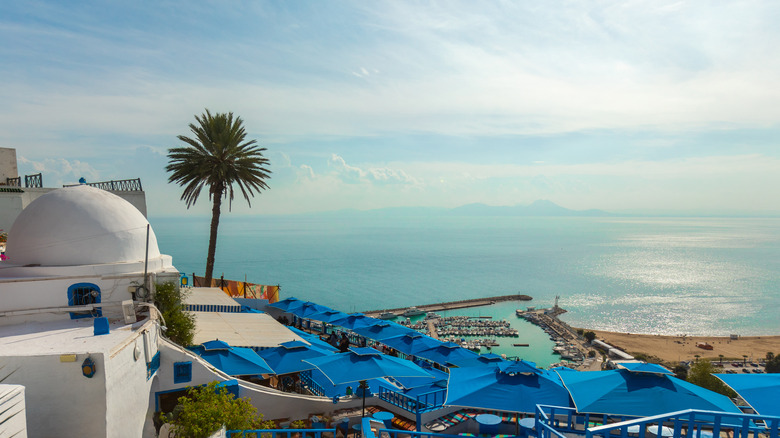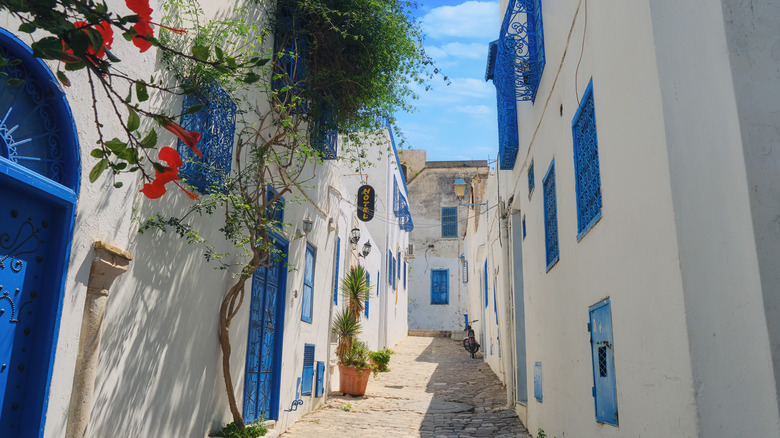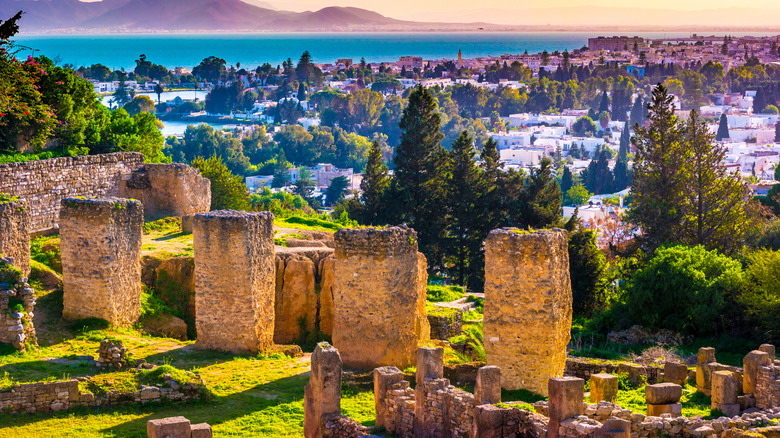Take A Relaxing Beach Vacation To This Underrated African Country
Thinking of northern Africa might spark images of the Egyptian Pyramids of Giza, vibrant Moroccan markets, or simply vast swaths of desert which not everyone may find appealing. Perhaps political unrest may come to mind as well, given the 2011 so-called Arab Spring wherein Tunisia, Egypt, and Libya saw protests against their longstanding governments. However, Tunisia and Egypt have peacefully moved on from the uprisings, and while the pyramids draw in tourists for Egypt, Tunisia has quite a bit to offer as well. Additionally, French is widely spoken in Tunisia, making the language barrier less daunting to those who are accustomed to the languages of Europe, the Americas, and Oceania.
Despite being much smaller than its neighboring countries, Tunisia boasts an extensive coastline with more than one option for beach relaxation. Among them is Sidi Bou Saïd near Tunisia's capital of Tunis, which makes for a quaint escape from the crowds seen at other Mediterranean beaches, like those of Santorini, Greece, or Capri, Italy. History-buffs will enjoy the ancient sites nearby as well.
Wander through the blue and white streets of Sidi Bou Saïd
Beaches at Sidi Bou Saïd vary from rocky to sandy. Among the cliffs in the northern part of the Sidi Bou Saïd area is the scenic Rocky Beach Sidi Bou Saïd, but if you prefer beaches with fine sand, head south to Sidi Bou Saïd Beach near the harbor for views of the blue water. Further south on the coastline is Amilcar Beach. This area juxtaposes fine sand with surrounding green hills.
On the way to the beaches, allow yourself to get lost within Sidi Bou Saïd's streets, which are filled with blue and white buildings similar to those of Greece or Morocco. Among the buildings are locally-owned shops, art galleries, and cafés. One of the notable blue and white buildings is the Dar El Annabi museum, which showcases Islamic architecture dating back to the 18th century. Sweeping views of the town, cliffs, and the Gulf of Tunis are found among these streets as well, especially from the City Panorama Platform and the Sidi Bou Saïd Lighthouse.
See Roman ruins around Carthage
The town of Sidi Bou Saïd is actually located within the historic suburb of Carthage, in the northeast of Tunis. This ancient city became a battleground between the Carthaginian and Roman empires, which both aimed to take over Sicily. The three wars, called the Punic Wars, occurred between 264 and 146 B.C.E., between the two empires. The Roman Republic prevailed, taking over Carthage, and even thousands of years later, Roman structures still stand. The Roman Theater of Carthage, Baths of Antoninus, and the Roman houses of Amilcar are among the notable sites leftover from Roman rule and are all walking distance from Amilcar Beach. Further inland is the Amphitheater of Carthage and Byrsa Hill (pictured above), both offering more ancient ruins.
Carthage and Sidi Bou Saïd are just around 7 miles (11 kilometers) away from the ports in Tunis, at which multiple ferries dock after sailing from coastal Italian cities such as Genova and Palermo. Tunisia's Tunis-Goulette-Marsa Metro (TGM) railway system connects the Tunis Marine station near the docks with the Marsa Plage "La Marsa" station, stopping at Sidi Bou Saïd and Sidi Dhrif, also located in the Sidi Bou Saïd area. To get closer to the Roman ruins, depart the train at Carthage Hannibal station.


